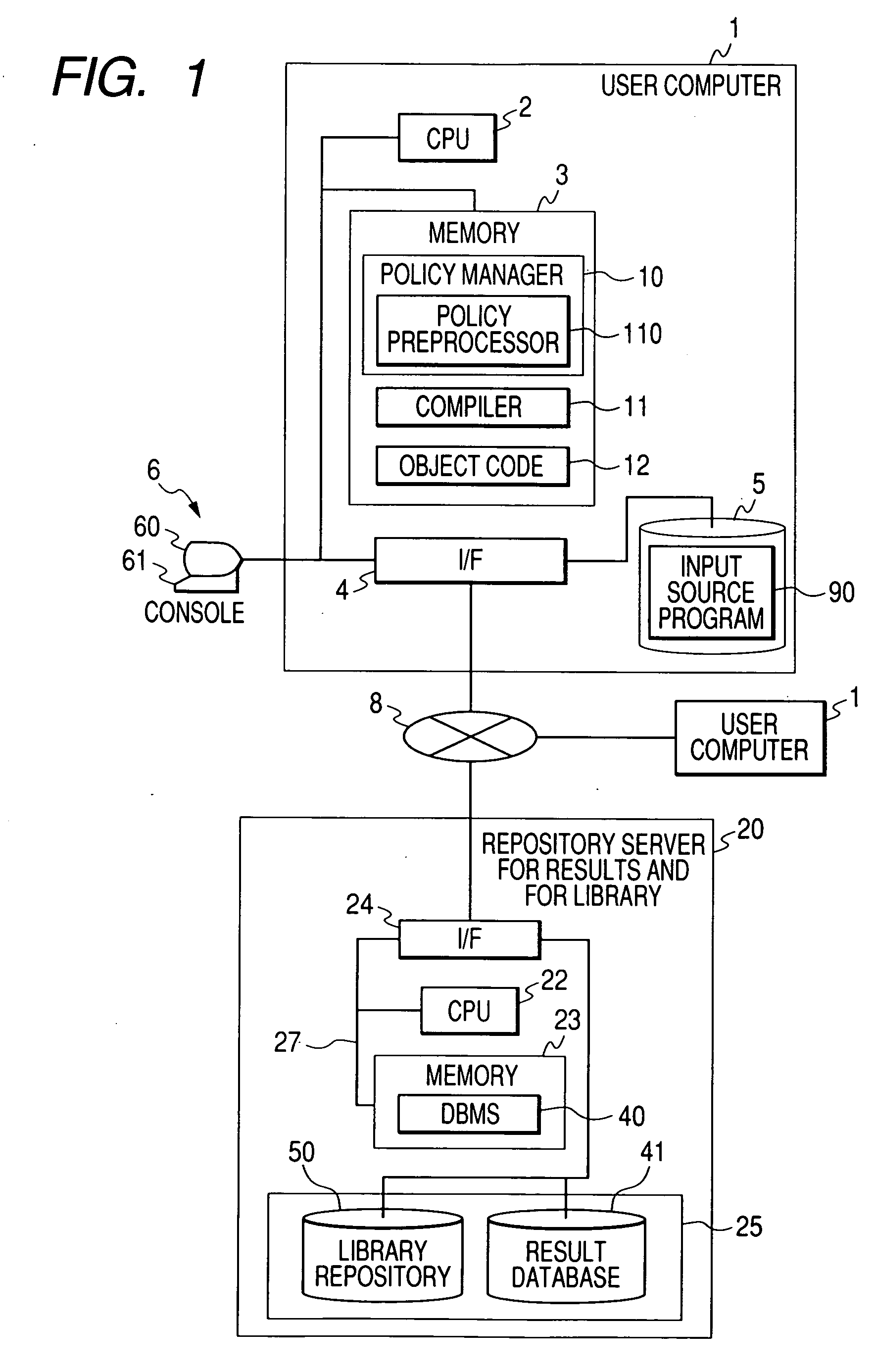Program and/or method for calculating tuning parameters for numerical computation library
a numerical computation and parameter technology, applied in the direction of electric programme control, program control, instruments, etc., can solve the problems of not being able to reflect a user, setting higher computational accuracy, and long computation tim
- Summary
- Abstract
- Description
- Claims
- Application Information
AI Technical Summary
Benefits of technology
Problems solved by technology
Method used
Image
Examples
second embodiment
[0096]FIG. 10 shows a second embodiment. In the second embodiment, the operation to determine an optimum tuning parameter TUNE as shown in FIG. 9 for the first embodiment is performed after an expected line L is set in a two-dimensional coordinate space with a horizontal axis representing speed performance and a vertical axis representing computational error as shown in FIG. 3. In other respects, the second embodiment is the same as the first embodiment.
[0097] S51 to S54 of the second embodiment are the same as those of the first embodiment. Namely, exploited points with matching execution conditions for the same solver 51 are selected in S51 to S54.
[0098] In S155, the expected line (error ideal line) L as shown in FIG. 3 is determined based on the execution time and computational error at each exploited point. To determine the expected line L (execution history characteristic), a known method such as a linear approximation method may be used.
[0099] In S156, a point PL on the exp...
third embodiment
[0102]FIGS. 11 and 12 show a third embodiment. In the third embodiment, the policy manager 10 as used in the first embodiment is arranged such that it reads a source program 90 generated in advance and such that it outputs an optimum tuning parameter TUNE to the console 6. The compiler 11 and the object 12 are activated when ordered by the user from the console 6. In other respects, the configuration of the third embodiment is the same as that of the first embodiment. Namely, the third embodiment shown in FIGS. 11 and 12 has only the second function out of the foregoing three functions described for the first embodiment.
[0103] The policy definition part 111 reads the source program 90, in which the solver 51 and execution conditions (input parameters) have been described, and sets policy parameters (S2 to S25 in FIG. 12). The processing of the third embodiment is equivalent to the processing of the first embodiment shown in FIG. 8 less S1, S11, S12, S3, S4, and S7. Namely, what is ...
fourth embodiment
[0108]FIG. 13 shows a fourth embodiment. In the fourth embodiment, the network 8 as used in the first embodiment is further connected with plural utility computers 30 and 31 which undertake operation requested by the user computer 1, and an accounting server 140 which manages accounting information for the user computer 1 having used the utility computer 30 or 31. The user computer 1 asks either of the utility computers 30 and 31 to execute the object 12 generated by the compiler 11. The user computer 1 and the server for results and for library 20 are configured to be the same as in the first embodiment.
[0109] The utility computer 30 or 31 executes the object 12 in accordance with a request received from the user computer 1 and returns the results of execution to the user computer 1. The utility computer 30 or 31 then sends accounting information generated as a result of executing the object 12 for the user computer 1 to the accounting server 140.
[0110] The accounting server 140 ...
PUM
 Login to View More
Login to View More Abstract
Description
Claims
Application Information
 Login to View More
Login to View More - R&D
- Intellectual Property
- Life Sciences
- Materials
- Tech Scout
- Unparalleled Data Quality
- Higher Quality Content
- 60% Fewer Hallucinations
Browse by: Latest US Patents, China's latest patents, Technical Efficacy Thesaurus, Application Domain, Technology Topic, Popular Technical Reports.
© 2025 PatSnap. All rights reserved.Legal|Privacy policy|Modern Slavery Act Transparency Statement|Sitemap|About US| Contact US: help@patsnap.com



